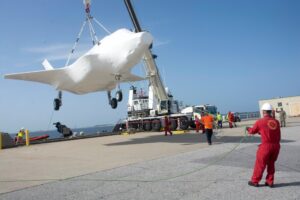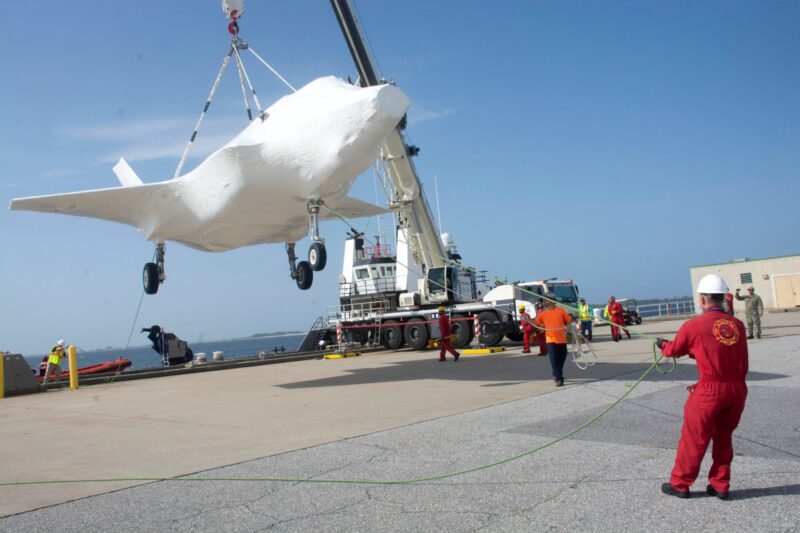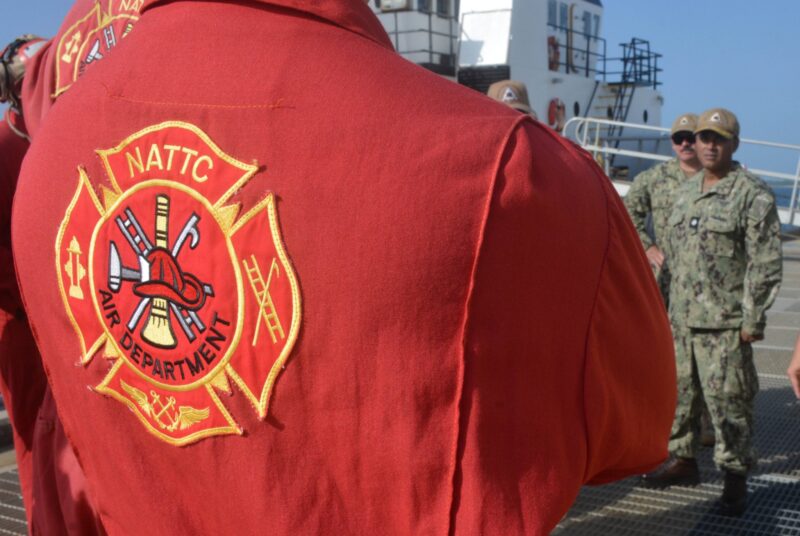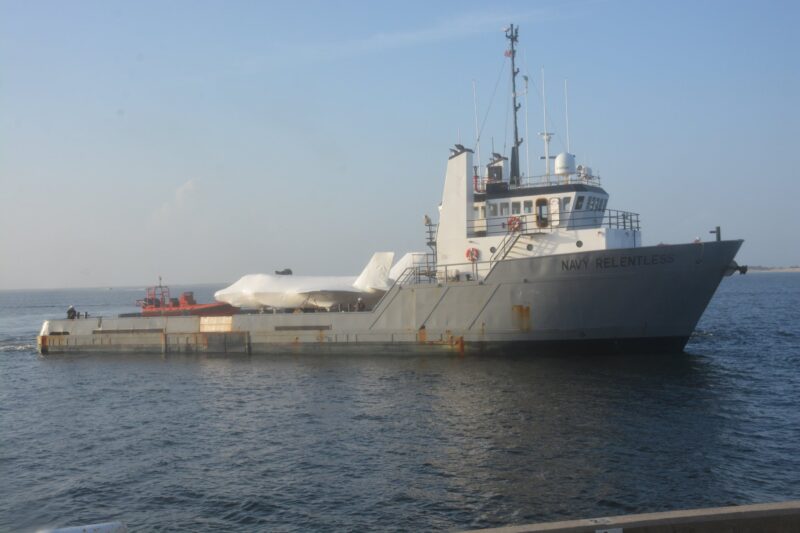 From PMA-251 & CNATT Public Affairs – NOTE: Kristin Beauchamp, PMA-251 communications specialist, and Jerron Barnett, CNATT public affairs officer, contributed to this report.
From PMA-251 & CNATT Public Affairs – NOTE: Kristin Beauchamp, PMA-251 communications specialist, and Jerron Barnett, CNATT public affairs officer, contributed to this report.
About PMA-251 -The Aircraft Launch and Recovery Equipment Program Office (PMA-251) provides life-cycle acquisition management for Navy and Marine Corps systems and equipment utilized for the launch and recovery of current and future fixed and rotary wing aircraft. ALRE products include catapults, arresting gear, helicopter landing systems, wind measuring systems, aviation based information systems, aviation marking and lighting, recovery systems and visual landing aids, aircraft firefighting equipment, and expeditionary airfield systems and related products.
CNATT – Center for Naval Aviation Technical Training
NAVAL AIR SYSTEMS COMMAND, Patuxent River, MD. – The Aircraft Launch and Recovery (ALRE) Program Office (PMA-251) fleet liaison team recently played a key role in helping improve the realistic training Sailors receive at the Naval Air Technical Training Center (NATTC) in Pensacola, Florida.
The Aircraft Launch and Recovery (ALRE) Program Office (PMA-251) fleet liaison team recently played a key role in helping improve the realistic training Sailors receive at the Naval Air Technical Training Center (NATTC) in Pensacola, Florida.
Mitch Heskett, the Center for Naval Aviation Technical Training’s (CNATT) readiness and logistics programs director, approached the PMA-251 fleet liaison team about a unique opportunity to procure an F-35B Lightning II training asset for crash and salvage training conducted onboard Naval Air Station Pensacola. CNATT is the headquarters for all Naval aviation training. NATTC is CNATT’s largest schoolhouse.
Chief Warrant Officer 5 (CWO5) Sang Lee, assistant ALRE fleet liaison officer, explained that the crash and salvage training community has been working to bring realistic F-35 training assets to Pensacola for several years.
“Students were using an F-18 alpha to mimic a Joint Strike Fighter,” said Lee. “The hoisting points were different; the configuration was different; the weight and balance were different; even the hook up points were unsatisfactory. Our students absolutely needed a training asset in Pensacola that reflected the actual aircraft on the ship.”
The F-35 Lightning II Joint Program Office (JPO) Patuxent River Integrated Test Force (ITF) had a system development and demonstration aircraft available, and all stakeholders quickly agreed to move the aircraft to the Florida panhandle.
The aircraft, BF-2, was the second F-35B to be produced. The F-35B is the short takeoff vertical landing (STOVL) variant of the fifth generation strike fighter.
After much planning and deliberation, all stakeholders collectively determined that funding was the last remaining hurdle.
The ALRE fleet liaison team approached Capt. Kenneth Sterbenz, ALRE program manager, with a proposal to use PMA-251 funds to move the aircraft.
“PMA-251 and its team quickly recognized the opportunity to make a major impact from a training perspective,” said Lee. “The overall cost was very small in comparison to the overall value of training; CNATT now has an asset that can be used for the next 10 to 15 years to train hundreds of sailors and better prepare them for the airwing of the future.”
With funding in place, plans quickly came together to move the aircraft, and on June 3, teams from ALRE, JPO, and CNATT looked on as the ITF, crane and supply ship teams loaded the shrink-wrapped air vehicle onto Navy Relentless at Naval Air Station Patuxent River.
After a seven-day, 1,550-mile trip at sea that began June 6, courtesy of Relentless Ship Captain Matt Thomas and his crew, the shrink-wrapped BF-2 arrived at the port of NAS Pensacola June 13. An excited group of staff from NATTC’s Air Department were on hand to offload the aircraft.
One of those excited Sailors in the group was CWO5 Wilfrid Bossous, NATTC air training officer.
“Having this aircraft in our air department is going to be very beneficial to the generations of students coming through,” Bossous said. “It will help teach them what to expect, see and use out in the fleet on a daily basis.”
Bossous said that once the aircraft is unwrapped and painted, and as the curriculum is updated, it will be used to teach students crash and salvage training.
Bossous also extended a huge thanks to the PMA-251, JPO ITF, and the CNATT staffs for their support.
Lee discussed the magnitude of the opportunity coming to the training community.
“We did whatever it took to get to ‘yes,’” said Lee. “This trainer will hugely benefit the fleet, the aircraft Crash and Salvage community, and finally give our students the experience they need to safely handle the F-35 in a crash.”






